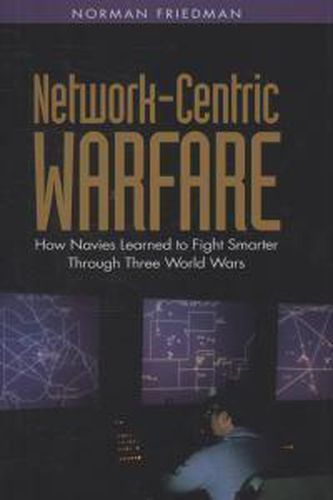Readings Newsletter
Become a Readings Member to make your shopping experience even easier.
Sign in or sign up for free!
You’re not far away from qualifying for FREE standard shipping within Australia
You’ve qualified for FREE standard shipping within Australia
The cart is loading…






Over the past decade, the United States has moved toward a new style of warfare, called network centric, that uses an almost real-time, shared picture of a military situation as the basis for operations. To explain what network-centric warfare is and how it works, defense analyst Norman Friedman uses specific historical examples of actual combat rather than the abstractions common to other books on the subject. He argues that navies invented this style of warfare and that twentieth-century wars, culminating in the Cold War, show how networked warfare worked�and did not work�and illustrate what net-on-net warfare means. The book builds on Friedman’s personal experience in an early application of network-centric warfare that developed the method of targeting the Tomahawk anti-ship missile. To give readers a realistic feeling for what the new style of warfare offers and what is needed to make it work, the book concentrates on the tactical picture, not the communications network itself. Friedman’s focus on what the warriors really want and need makes it possible to evaluate the various contributions to a network-centric system. Without such a focus, Friedman notes, the needs of networked warfare reduce simply to the desire for more and more information, delivered at greater and greater speeds. The information he provides is valuable to all the services, and students of history will appreciate the light it sheds on new ways of understanding old conflicts.
AUTHOR: Norman Friedman is a defense analyst and historian specializing in the intersection of technology and national strategy. He was Deputy Director of National Security Studies at the Hudson Institute in New York under Herman Kahn, and later was personal consultant to the Secretary of the Navy for a decade. He is the author of 33 books, including Naval Firepower, Naval Institute Guide to World Naval Weapon Systems, and The Fifty-Year War. He has conducted or co-authored numerous studies, and served as a futurologist for the U.S. Marine Corps in 2002-2004. He was awarded the Westminster Prize in 2001 for the best military history book of the previous year, from the British Royal United Services Institute. His Seapower as Strategy won the Samuel Eliot Morrison prize awarded by the Naval Order of the United States in 2002. He writes a monthly column for Proceedings magazine, lectures widely, and regularly testifies before Congress on U.S. Navy programs. 50 b/w photos
$9.00 standard shipping within Australia
FREE standard shipping within Australia for orders over $100.00
Express & International shipping calculated at checkout
Over the past decade, the United States has moved toward a new style of warfare, called network centric, that uses an almost real-time, shared picture of a military situation as the basis for operations. To explain what network-centric warfare is and how it works, defense analyst Norman Friedman uses specific historical examples of actual combat rather than the abstractions common to other books on the subject. He argues that navies invented this style of warfare and that twentieth-century wars, culminating in the Cold War, show how networked warfare worked�and did not work�and illustrate what net-on-net warfare means. The book builds on Friedman’s personal experience in an early application of network-centric warfare that developed the method of targeting the Tomahawk anti-ship missile. To give readers a realistic feeling for what the new style of warfare offers and what is needed to make it work, the book concentrates on the tactical picture, not the communications network itself. Friedman’s focus on what the warriors really want and need makes it possible to evaluate the various contributions to a network-centric system. Without such a focus, Friedman notes, the needs of networked warfare reduce simply to the desire for more and more information, delivered at greater and greater speeds. The information he provides is valuable to all the services, and students of history will appreciate the light it sheds on new ways of understanding old conflicts.
AUTHOR: Norman Friedman is a defense analyst and historian specializing in the intersection of technology and national strategy. He was Deputy Director of National Security Studies at the Hudson Institute in New York under Herman Kahn, and later was personal consultant to the Secretary of the Navy for a decade. He is the author of 33 books, including Naval Firepower, Naval Institute Guide to World Naval Weapon Systems, and The Fifty-Year War. He has conducted or co-authored numerous studies, and served as a futurologist for the U.S. Marine Corps in 2002-2004. He was awarded the Westminster Prize in 2001 for the best military history book of the previous year, from the British Royal United Services Institute. His Seapower as Strategy won the Samuel Eliot Morrison prize awarded by the Naval Order of the United States in 2002. He writes a monthly column for Proceedings magazine, lectures widely, and regularly testifies before Congress on U.S. Navy programs. 50 b/w photos